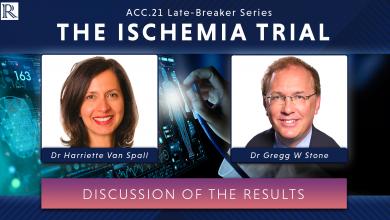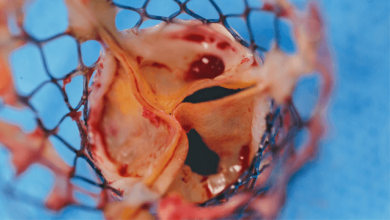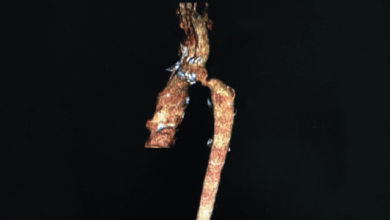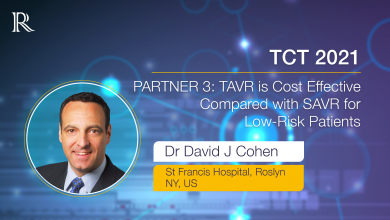Search results
PCI in Women
Author(s):
Mirvat Alasnag
,
Valeria Paradies
,
Nicola Ryan
,
et al
Added:
4 months ago
Article
Author(s):
Gregg Stone
,
Harriette Van Spall
Added:
2 years ago
Dr Gregg W Stone (Mount Sinai Heart Health System, New York, US) and Dr Harriette Van Spall (McMaster University, Hamilton, CA) discuss the latest results from the ISCHEMIA trial.
The trial assessed the impact of completeness of revascularization on clinical outcomes in patients with stable ischemic heart disease treated with an invasive versus conservative strategy.
Recorded remotely from New…
View more
Amyloid Heart Disease
Author(s):
Yaser Nemshah
,
Alex Clavijo
,
Gyanendra Sharma
Added:
3 years ago
Article
Author(s):
Nils Perrin
,
Anita W Asgar
Added:
2 years ago
Principles of Pressure Measurements for Assessment of Lower-extremity Peripheral Arterial Disease
Author(s):
Marsha M Neumyer
,
Bill Bertolino
Added:
3 years ago
Article
Coarctation: A Review
Author(s):
Marc G Cribbs
Added:
3 years ago
Article
Author(s):
Somsupha Kanjanauthai
,
Kabir Bhasin
,
Luigi Pirelli
,
et al
Added:
3 years ago
Transcatheter aortic valve replacement (TAVR) has been established as a therapeutic option for patients with severe symptomatic aortic stenosis who are considered to be of intermediate, high or prohibitive surgical risk.1–5 As a result of favorable TAVR outcomes and substantial improvements in transcatheter heart valve (THV) technologies and implantation techniques, the feasibility of broadening…
View more
Author(s):
David J Cohen
Added:
2 years ago
Dr David J Cohen (St Francis Hospital, Roslyn, NY, US) discusses the findings from PARTNER 3 Economic Study. The study, presented first at TCT 2021, showed that for patients with severe AS and low surgical risk, TF-TAVR with the SAPIEN 3 valve is cost-saving compared with SAVR at 2-year follow-up.
Discussion Points
Importance of the Study
Used Data
Complexities in Relation to the Costs of…
View more
Author(s):
Bruno Scheller
Added:
2 years ago
In this video, Professor Bruno Scheller (Saarland University, Saarbrücken, DE) sits down to discuss the one-year angiographic outcomes of two parallel randomized trials investigating the effectiveness off sirolimus-coated and paclitaxel-coated DCB's in the treatment of coronary in-stent restenosis. Findings suggest comparable outcomes in both devices.
Discussion points:
1. Importance of this…
View more
Author(s):
Rhian E Davies
,
J Dawn Abbott
Added:
3 years ago
Percutaneous Coronary Intervention for Clinical Syndromes
Stable Angina
The primary benefit of percutaneous coronary intervention (PCI) over medical therapy in patients with stable angina is the improved quality of life. The PCI in stable angina (ORBITA) trial was the first sham-controlled trial of PCI where 200 medically optimized patients with single vessel disease were randomized to PCI or…
View more















 « First
« First